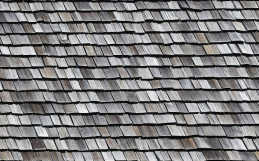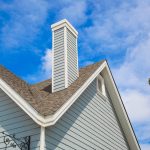Skylights are a great way to bring in natural light and add a point of interest to both the interior and exterior of your home. They can also let the house breathe when opened, and solar-powered skylights may even be worth some federal tax credits when they’re installed. But if you’re replacing your roof, you may be asking yourself, “should I replace skylights when reroofing?”
As the largest uninterrupted part of your home, and your first line of defense against Mother Nature, the fewer holes in your roof the better. When professionally installed, however, skylights can improve the energy efficiency of the home and look great doing it. If not, they could be causing more problems than they’re worth.
So if you’re considering the task of replacing a skylight while re-roofing your house, there are several factors that need to be taken into consideration. Is the skylight in good shape, was it correctly installed, or is there any water damage? If it does need some work, can you repair or is replacing the only option?
Aside from the functional observations, does it look good with the new roofing material? If getting a new roof installed is part of a whole home remodel, does the existing skylight work with the renovation? It could also just be time to replace the skylight as a matter of wear and tear over time. Keeping an older skylight to save money shouldn’t be the only deciding factor.
When to Replace Your Skylight
When examining whether or not you should replace a skylight when re-roofing your home, it is best to first assess the condition of the current skylight. Then you can determine if it needs to be replaced. If it is in decent shape, it may make more sense financially to just continue using it.
However, if there is any noticeable damage around the edges or if moisture has been getting into the house via the skylight then it would likely be best to replace it. Consider inspecting for any cracks or holes, as well as signs of mold or mildew which could signal water infiltration issues.
Make sure to check the surrounding materials, too, such as roof decking. If there is any damage, it could be a sign of a faulty skylight or poor installation tactics. If the underlayment, flashing, caulking, or other materials are lacking or installed correctly, the skylight could be in trouble.
It is also important to make sure that you select a new skylight of adequate size, one that will properly fit into your existing roof opening. If you decide that replacing a skylight while re-roofing makes sense for you financially and structurally, then you should review different options when selecting your new model.
The process of replacing a skylight during a roof replacement can vary greatly based on local building codes and regulations as well as what kind of model you have chosen. To ensure you get the most out of your new skylight–or the existing skylight–use an experienced professional to make sure it’s done right.
Different Types of Skylights
When older skylights are replaced with the newest skylights on the market, you’ll see immediate benefits. With tinting that can cut down on UV rays, enclosed blinds, and improved insulation, your home becomes that much more comfortable. Not to mention taking care of any potential issues that need to be addressed, such as water damage or dry rot.
A skylight can bring natural light into a room and create an aesthetically pleasing atmosphere, but there could be potential issues with roof damage due to water infiltration. Additionally, it is important to consider the cost and complexity of installation. Different types of roofs require different installation methods.
When deciding whether or not to replace your skylight while re-roofing your home, carefully consider all factors such as cost, structural integrity, damaged materials, and more. When it comes time to replace your roof, reach out to Warner Construction. We’ll inspect your roof and skylight to see what makes the most sense for your situation.







